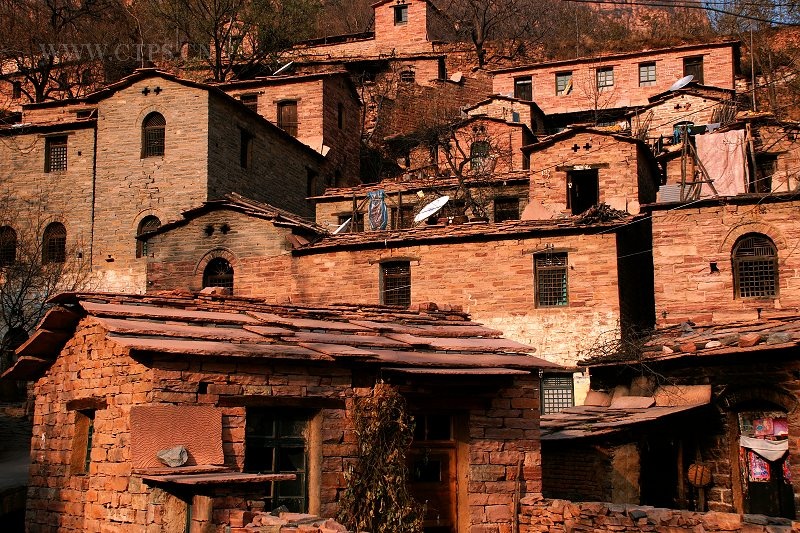Wisdom needed to conserve, develop ancient villages

The residents of Yingtan in ancient times obtained raw materials locally from the Taihang mountains, so many buildings were built with red sandstone tiles.
With a history of over 600 years, Yingtan village is situated in Luluo, a town in the western area of Xingtai, a city in northern China’s Hebei Province. Yingtan village is best known for its well-preserved stone castle and its long history of business culture. The cultural heritage of the area has become a focus of study, particularly in regard to the culture of business in the Hebei area.
After driving west for approximately 70 kilometers from Xingtai city, visitors reach Yingtan village, located deep in the Taihang Mountains. Vehicles can only drive on the temporarily established roadbecause the main road is still unusable due to flood damage from last summer, which has not yet been completely repaired. Local villagers said that the destroyed roads have greatly affected tourism and the government is taking measures to solve the problem.
Lu Shaoyang once worked as the village Party secretary. His deep knowledge of the culture and history of the village prompted him to become a researcher and a tour guide for the village after retirement.
He said that the name Yingtan dates back to Huang Chao’s rebellion (874-884) in the late period of the Tang Dynasty (618- 907) and that the old village was a barracks left behind by Huang Chao’s army. Barracks used to be pronounced Yingpan, which is similar to Yingtan in the local dialect, so the people there gradually came to call it Yingtan.
The residents of Yingtan in ancient times obtained raw materials locally from the Taihang mountains, so buildings were widely built with red sandstone tiles. The resulting effect gave the village a unique appearance.
Mostly preserved from the Ming and Qing dynasties, the ancient village’s buildings have a long history. A nearly 3-meter-long stone wall and four doors were built, in addition to 36 arched stone bridges and 67 folk houses (509 rooms in total). Ancient stone cave dwellings, stone fences, stone roads and old wells as well as lots of amazing ancient trees can be found anywhere and everywhere.
Alleys connect to streets, which are built along the mountain and stretch up to each folk house along the winding mountain, even ascending in zigzags to the highest point of the village.
As a water-rich village, Yingtan has a large number of old wells in the houses, to ensure a steady water supply.
After 600 years, Yingtan village has been well protected as a typical style of architecture in the Taihang Mountains. In particular, Dehe Hall, Guihe Hall, Zhonghe Hall and Rulin Hall, built by a family surnamed Lu, combine primitive simplicity as well as sophistication.
In 2007, Yingtan was named one of China’s Historical and Cultural Villages by the State Administration of Cultural Heritage. Since protection measures have been gradually rolled out by the local government.
The unique folk house structures and scenery here have attracted many tourists and artists, even working as a drawing and painting base for art students from the universities of North China.
Each old house in the village must be repaired so that it looks the same as it did originally, and most local residents have built new houses and moved out, but lots of shaky, rattling timber windows and doors that threaten to break have not been restored due to a lack of repair funds, local villagers said.
Yingtan is a microcosm of ancient village protection in China, showing that the current protection conditions are not optimistic amid the process of rapid urbanization and there are still some problems to be solved in the boom time for development of old villages.
Liu Shilin, head of the Institute of Urban Science at Shanghai Jiao Tong University, offered three suggestions. Firstly, rural development planning should be strengthened through reference to the levels and standards of urban planning, transforming the relatively casual planning of rural areas, and giving a level of attention to rural planning that is equal to urban counterparts.
The unique cultural resources and heritage requirments need to be studied and protected, and then more market value will be explored based on the resources of the villages as a whole, not in broken pieces, Liu said.
Liu stressed that new and advanced techniques, tools and methods in architecture should be widely used to optimize space and repair old buildings to improve the quality of life local villagers.
